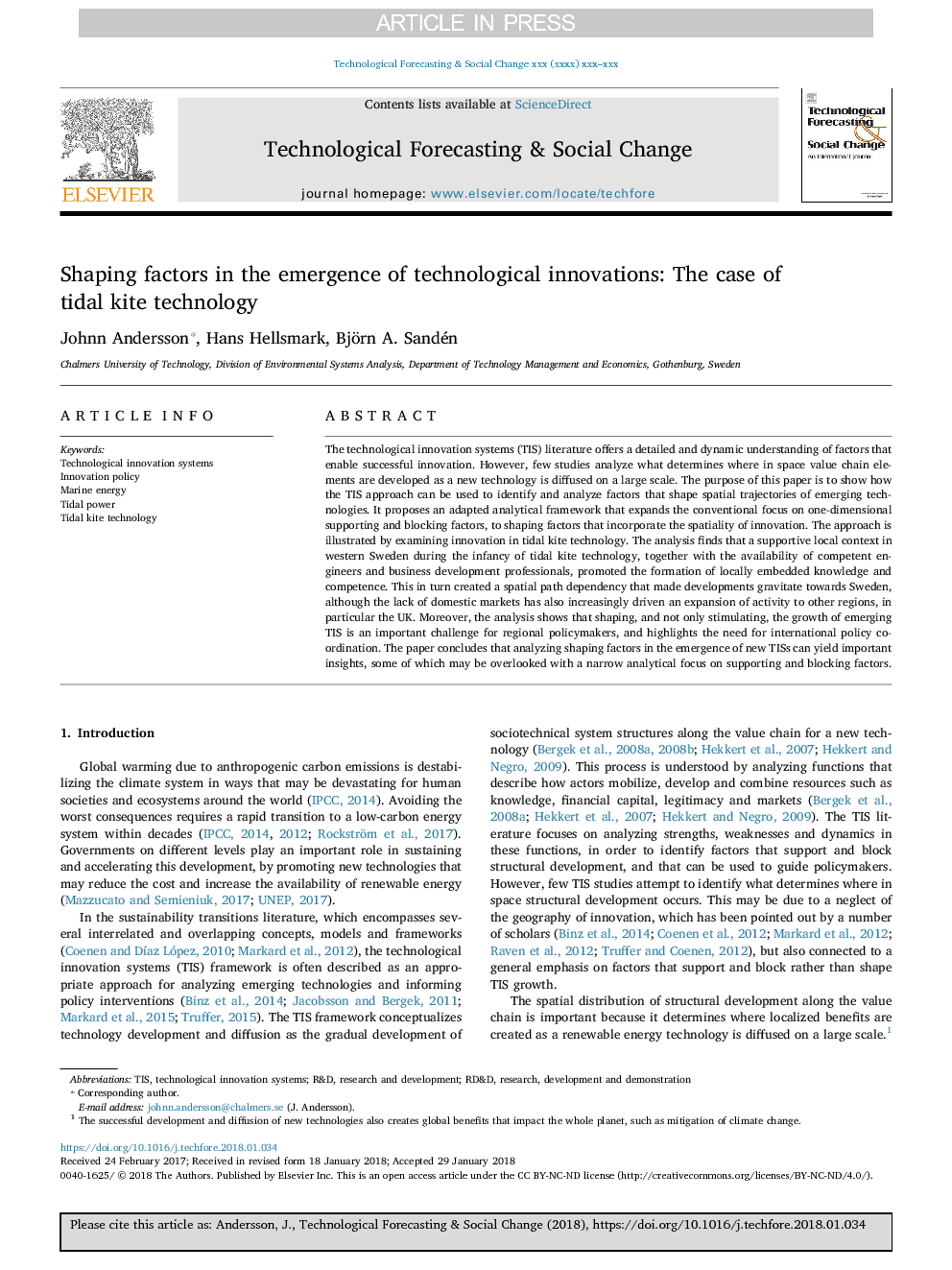ترجمه فارسی عنوان مقاله
عوامل تشکیل دهنده در ظهور نوآوری های تکنولوژیکی: مورد تکنولوژی بادبادک بادوام
عنوان انگلیسی
Shaping factors in the emergence of technological innovations: The case of tidal kite technology
| کد مقاله | سال انتشار | تعداد صفحات مقاله انگلیسی |
|---|---|---|
| 96469 | 2018 | 18 صفحه PDF |
منبع

Publisher : Elsevier - Science Direct (الزویر - ساینس دایرکت)
Journal : Technological Forecasting and Social Change, Available online 14 February 2018

